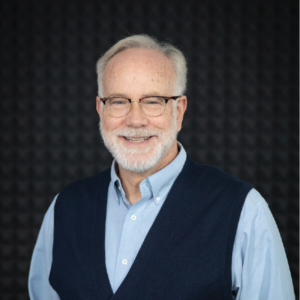The Third Third Language Challenge: Are You Part of Monster?
Is it helpful to refer to a group of human beings as a monster? Is it even moral to do so? Or does it dehumanize people in an unacceptable way? Even weaponizing them? Suppose somebody referred to other segments of our world in this way. How would that go over?
The Third Third Language Challenge: Are You Part of Monster?
by Mark D. Roberts, Ph.D.
Max De Pree Center for Leadership
Fuller Theological Seminary
I grew up loving big, scary monsters. Godzilla, Rodan, Monster Zero, and company thrilled me on late night TV movies. Though Dracula and the Wolf Man gave me nightmares, for some reason I wasn’t terrified by the humongous monsters that destroyed Tokyo and other major cities. Maybe they were just too big to be believable.
Now, if a real gigantic monster were coming in my direction, that would be something altogether different. And that’s exactly what is happening night now, according to Washington Post columnist Robert J. Samuelson in “We haven’t prepared for the aging monster.”
Notice the adjective describing this monster. It is an “aging” monster. The monster threatening us is made up of aging people. If you’re in the third of life, as I am, then you are part of the monster. You’re not running away from it on the streets of some threatened city. Rather, you are a portion of the scary beast itself and you’re coming this way . . . fast.
What exactly is this monster? Samuelson explains, “The problem is simple. Low birth rates and increasing life expectancies result in aging populations.” The fact of more older people means, among other things, that the “costs of Social Security and pensions will explode.” But there will be proportionately fewer younger people to pay for these costs. This, according to Samuelson, will wreak economic havoc, not only in the United States, but also in countries throughout the world.
Samuelson certainly as a point. We do need to take seriously the aging of our population and the economic impact. I’m not arguing against him about this, though I find it telling that he seems not to believe that older people could help solve the problem through their own work: being “unretired” or “semi-retired,” starting new businesses, paying taxes on their income, etc. My main concern about Samuelson’s article is his choice of language. He seems to think there is nothing wrong with referring to millions of older adults as a “monster.” And, for that matter, the editors of the Washington Post didn’t have a problem with this either.
Is it helpful to refer to a group of human beings as a monster? Is it even moral to do so? Or does it dehumanize people in an unacceptable way? Even weaponizing them? Suppose somebody referred to other segments of our world in this way. How would that go over?
In fairness to Samuelson, he wasn’t intending to call actual people monsters. His monster is the aging of the world’s population. But, still, I’m not sure that his monster metaphor is appropriate or helpful, especially when many of those who are part of the monster could actually help lessen its negative impact. In one recent Godzilla movie, the famed monster actually saved the city of San Francisco. Perhaps something like this is possible for the “monster” of the growing older population.
I’ll have more to say about this in a future Third Third blog post. For now, let’s pay close attention to the language we use for the third third of life and the people in it.
Looking for More on the Third Third of Life?
You can find much more about the third third of life by checking out our Third Third Resources page.

Mark D. Roberts
Senior Strategist
Dr. Mark D. Roberts is a Senior Strategist for Fuller’s Max De Pree Center for Leadership, where he focuses on the spiritual development and thriving of leaders. He is the principal writer of the daily devotional, Life for Leaders,...


